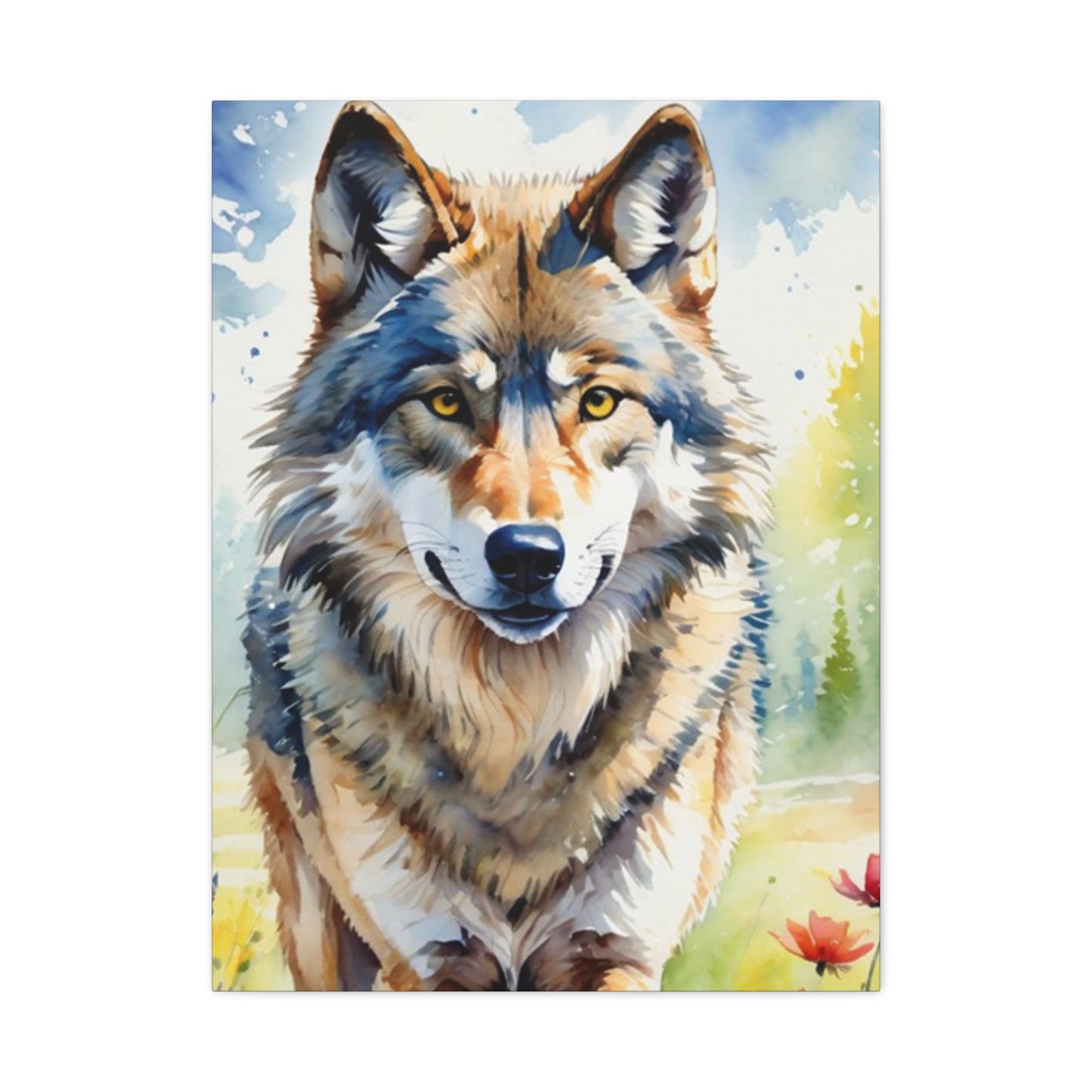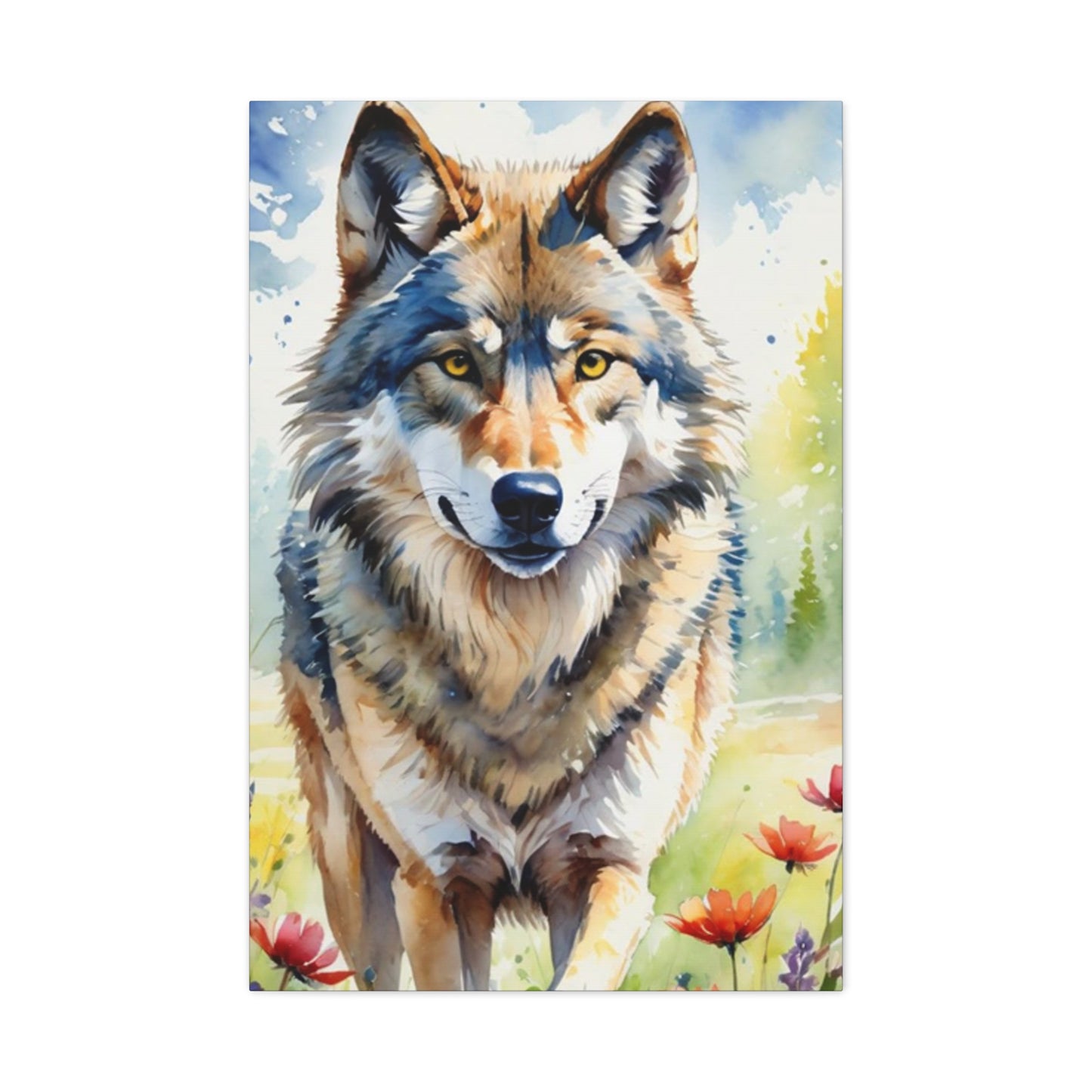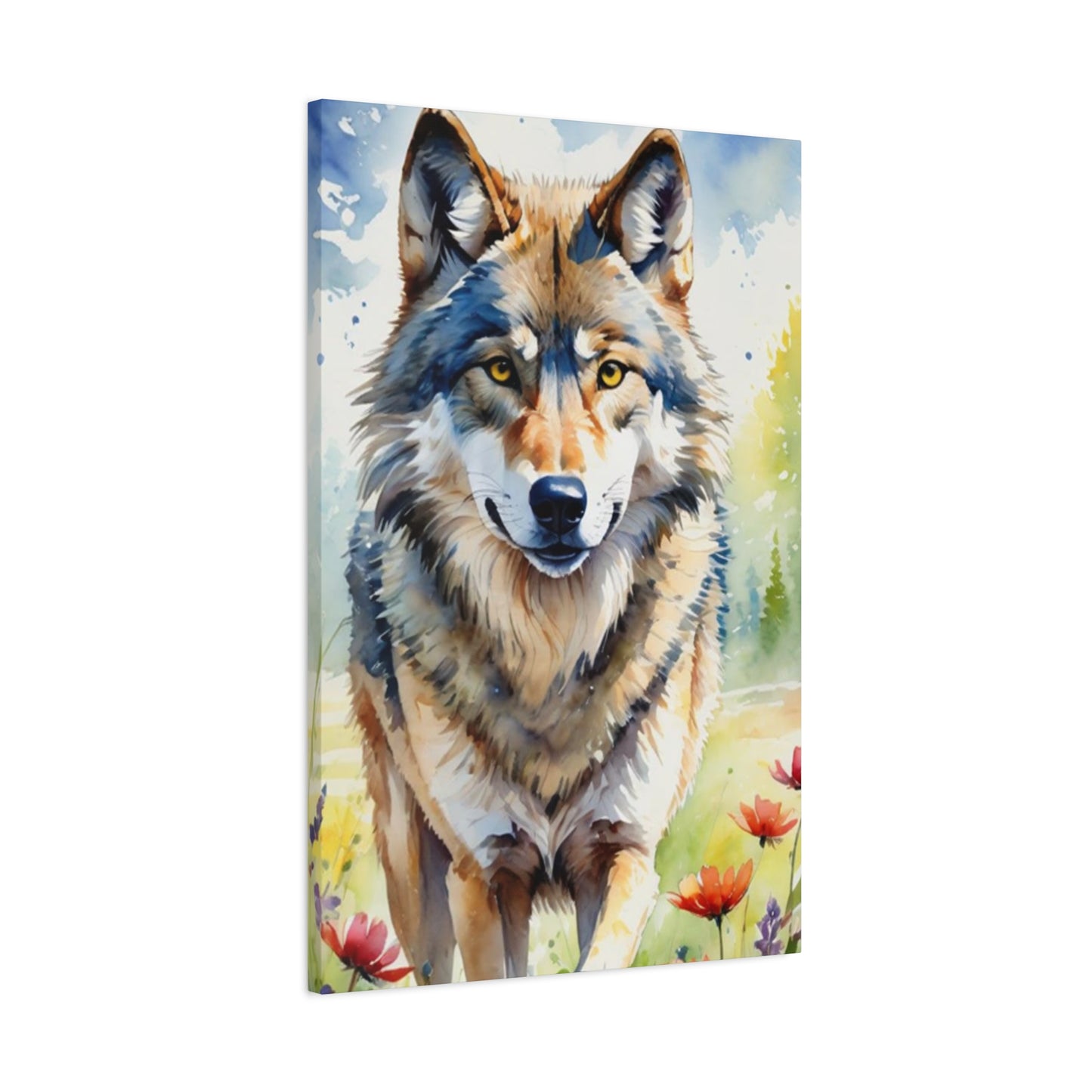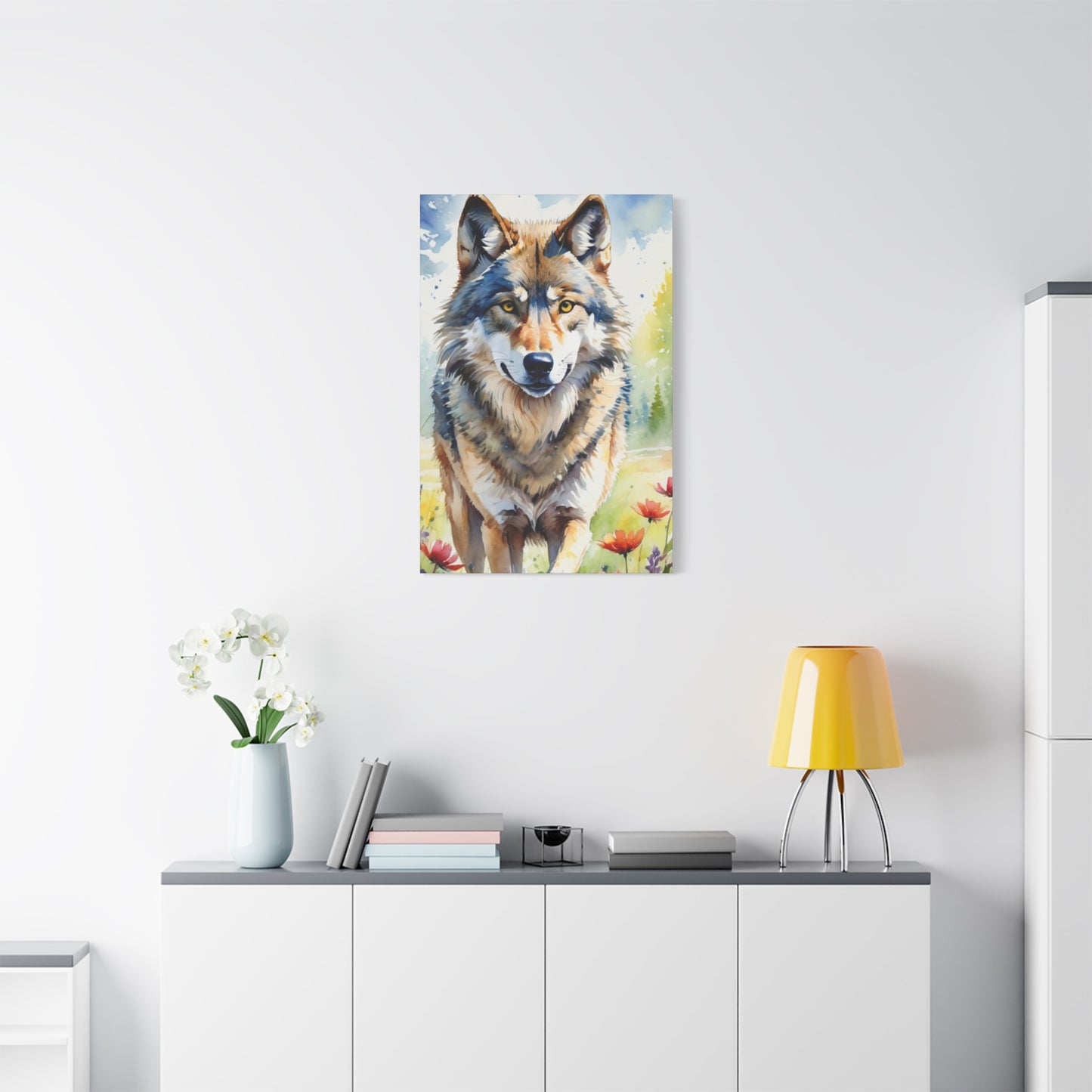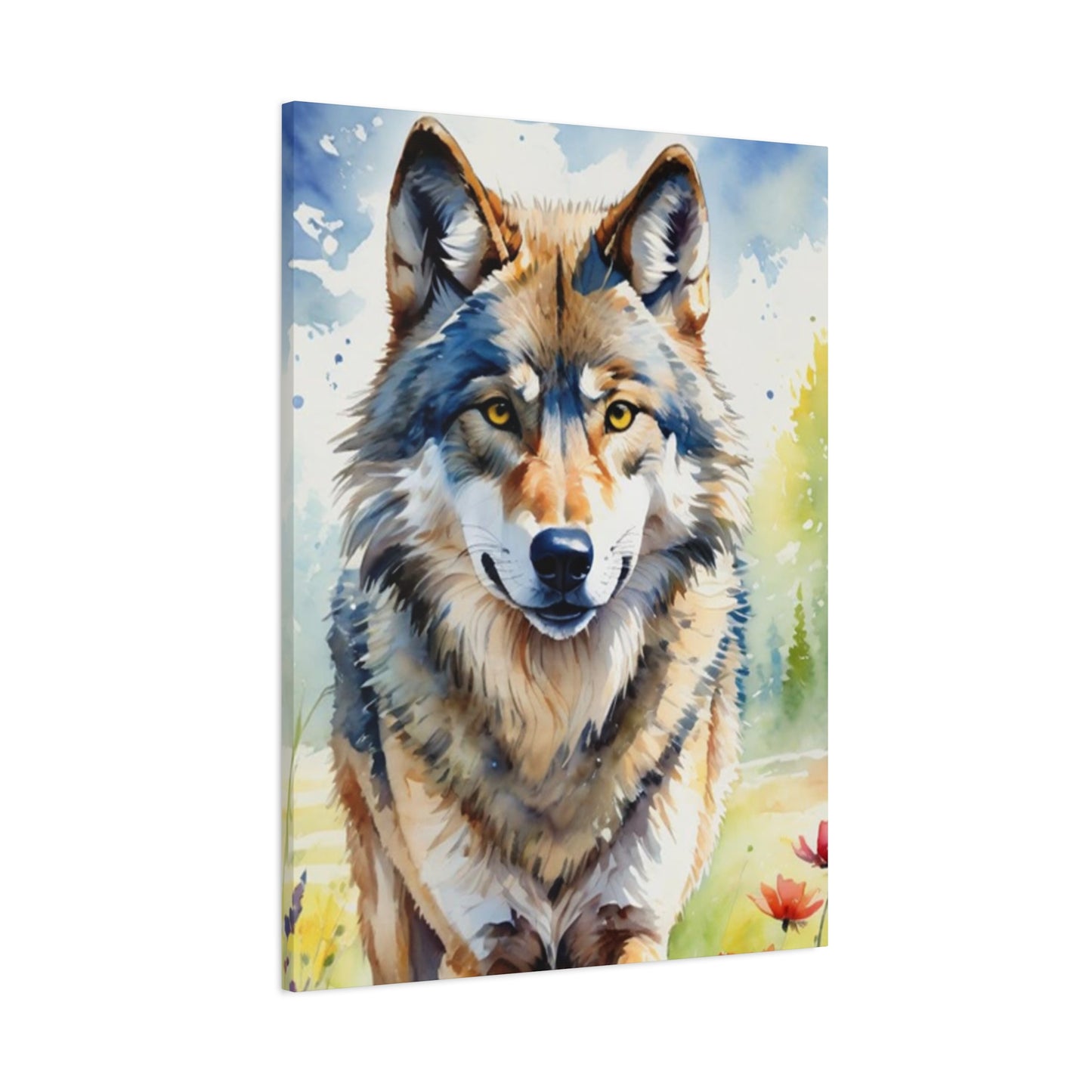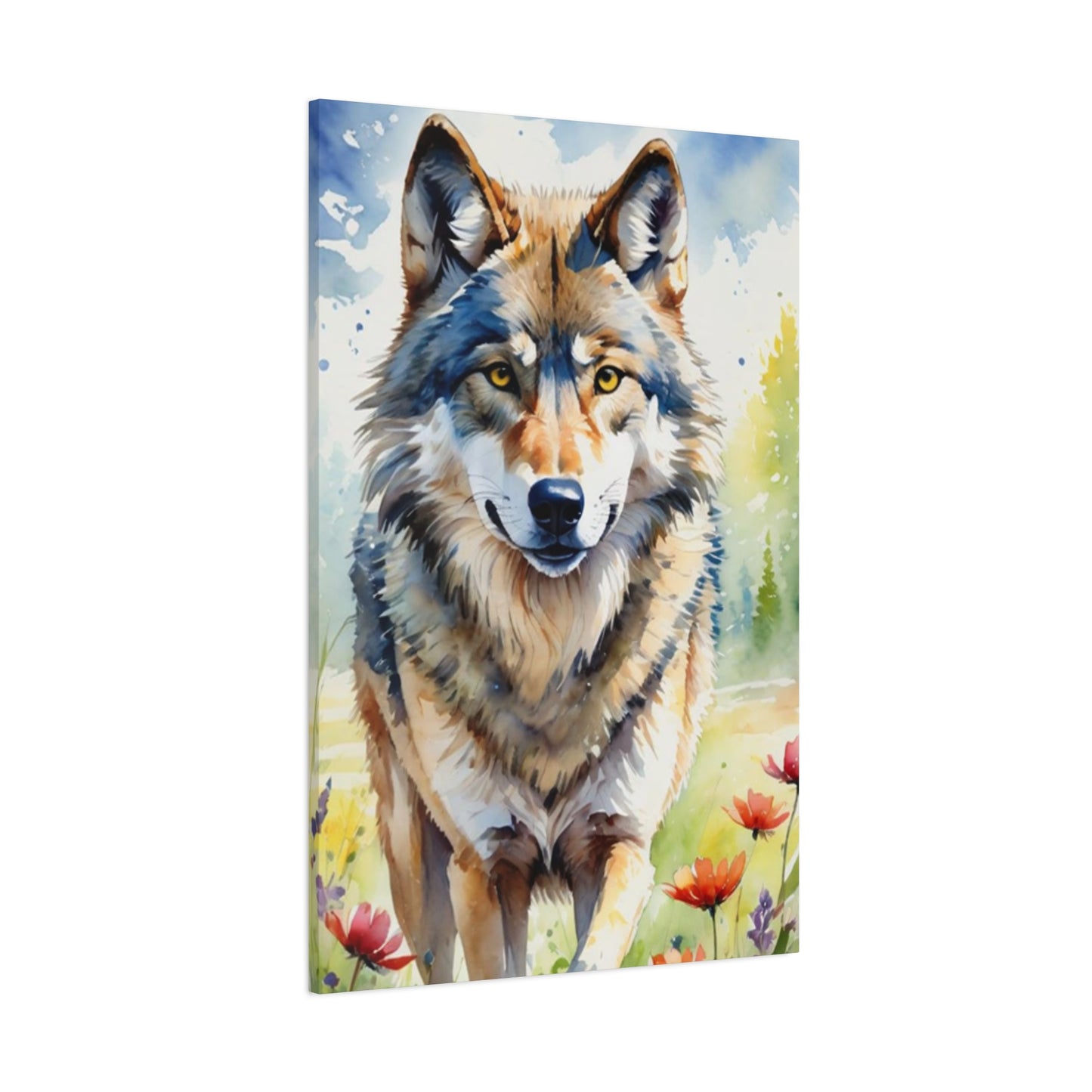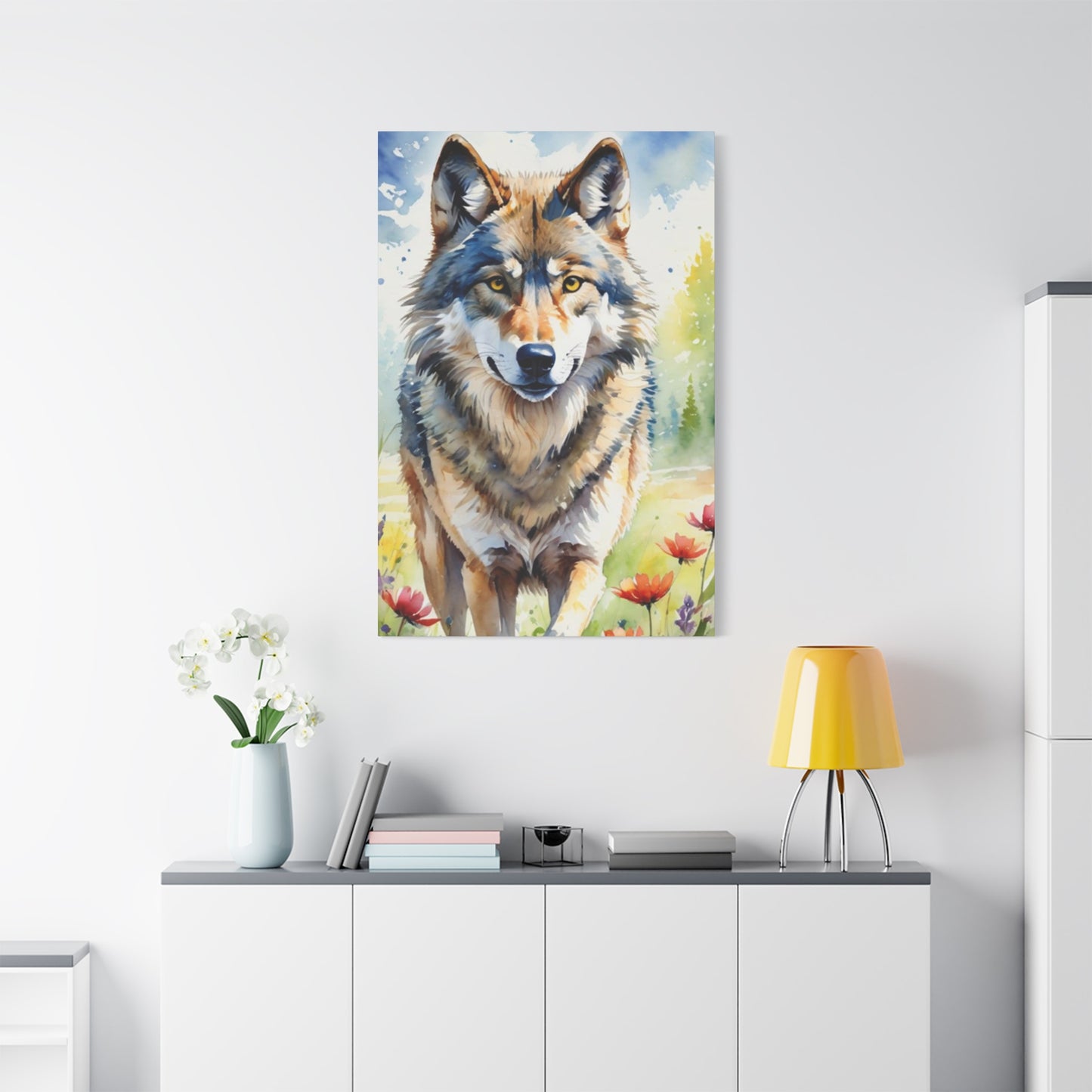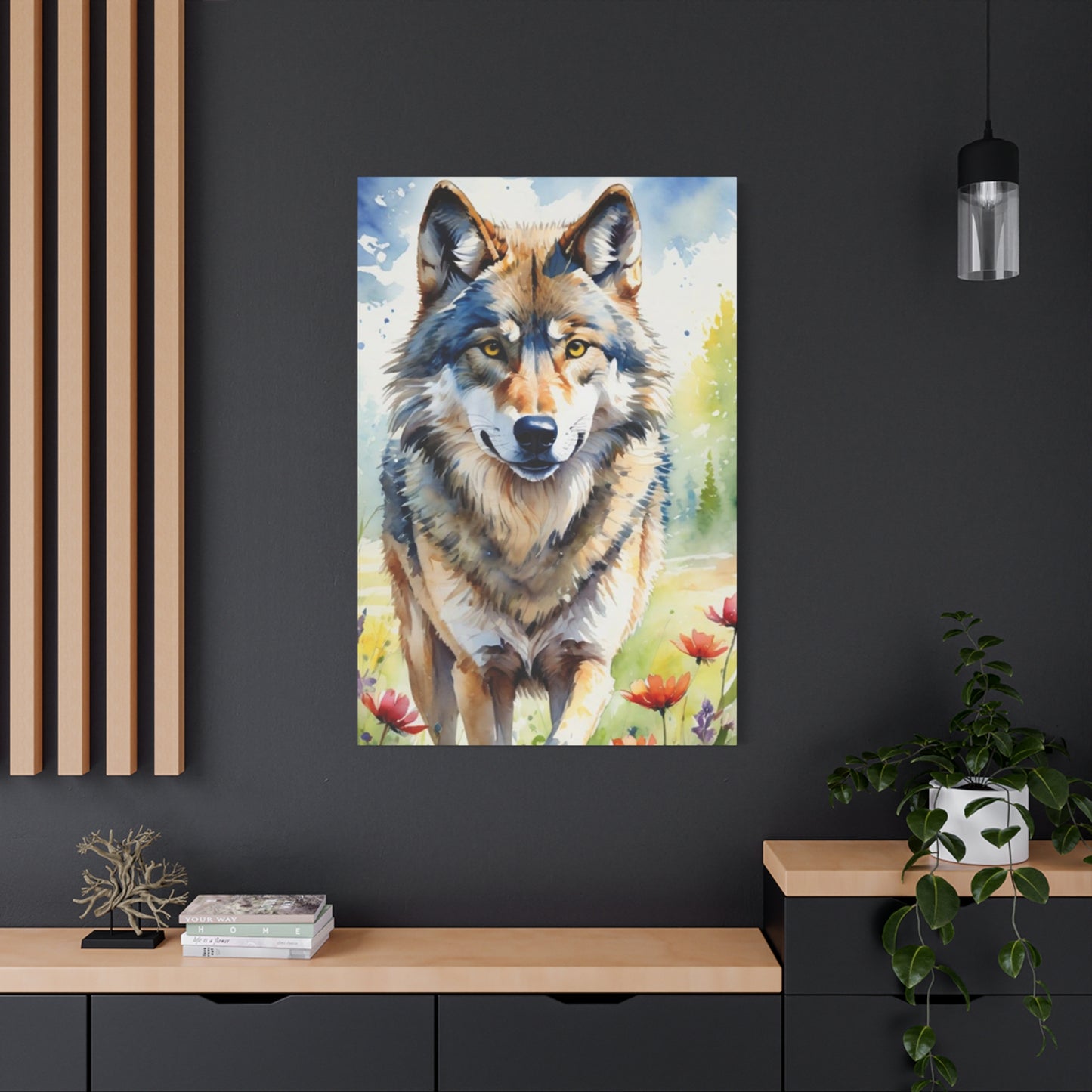Majestic Canine Imagery: The Timeless Appeal of Wolf Painting Wall art for Modern Interiors
The presence of wolf-themed artwork in contemporary living spaces represents far more than mere decoration. These powerful images capture the essence of wilderness, freedom, and primal instinct that resonates deeply with human consciousness. When individuals choose to display wolf canvas prints on their walls, they are making a statement about their connection to nature, their appreciation for untamed beauty, and their desire to bring elements of the wild into domesticated environments.
Canvas prints featuring wolves have experienced tremendous growth in popularity across residential and commercial spaces. Interior designers, homeowners, and art collectors increasingly recognize the unique aesthetic value these pieces bring to various settings. The wolf, as a subject matter, carries profound symbolic weight across cultures and generations, making it an enduring choice for those seeking meaningful artistic expressions in their surroundings.
The combination of wolves as subjects and canvas as a medium creates particularly striking results. Canvas allows for rich color reproduction, textural depth, and durability that other printing methods cannot match. When wolf imagery is transferred onto quality canvas material, the result captures the animal's fierce beauty, penetrating gaze, and commanding presence in ways that resonate with viewers on multiple levels.
This comprehensive exploration examines every aspect of wolf canvas artwork, from artistic techniques and cultural significance to practical considerations for selection and display. Whether you are a seasoned collector or someone considering their first wildlife art purchase, understanding the nuances of wolf canvas prints will enhance your appreciation and help you make informed decisions about incorporating these powerful images into your personal or professional spaces.
The Artistic Evolution of Wolf Depictions in Visual Culture
Throughout human history, wolves have occupied a central position in artistic expression across countless civilizations. Ancient cave paintings discovered in locations spanning from Europe to Asia feature wolves among the earliest subjects chosen by our ancestors. These primitive artworks, created tens of thousands of years ago, demonstrate humanity's long-standing fascination with these apex predators and their role in the natural world.
As artistic techniques evolved through the centuries, so too did the methods of depicting wolves. Medieval manuscripts often portrayed wolves in symbolic contexts, representing both danger and wildness beyond the boundaries of civilization. During the Renaissance period, artists began incorporating more naturalistic representations of wolves into their works, studying the animals' anatomy and behavior to create increasingly accurate portrayals.
The Romantic era brought a shift in how wolves were perceived and depicted in art. Rather than being viewed solely as threats to human settlements, wolves began to be romanticized as symbols of untamed nature and freedom. Artists of this period frequently placed wolves in dramatic landscapes, emphasizing their connection to wild, unspoiled environments. This romantic vision of wolves continues to influence contemporary artistic interpretations.
Modern artistic approaches to wolf imagery span an incredible range of styles and techniques. Photorealistic paintings capture every detail of wolf anatomy with scientific precision, while abstract interpretations distill the essence of these creatures into bold shapes and colors. Impressionistic wolf art focuses on mood and atmosphere, using color and brushwork to evoke emotional responses rather than precise representation.
Contemporary digital artists have expanded the possibilities for wolf imagery even further. Using advanced software and techniques, they create fantastical interpretations that blend realism with imagination. Some digital works place wolves in surreal environments or add mystical elements that enhance their already powerful symbolic resonance. These digital creations can then be transferred to canvas using high-quality printing methods, making them accessible to broader audiences.
The transition from traditional painting methods to modern canvas printing technology has democratized access to wolf artwork. Where once only original paintings or expensive reproductions were available, today's printing techniques allow for high-quality reproductions that maintain the integrity of the original artwork while being more affordable and widely available. This accessibility has contributed significantly to the popularity of wolf canvas prints in contemporary interior design.
Symbolic Meanings Behind Wolf Imagery Across Global Cultures
The wolf carries remarkably diverse symbolic meanings across different cultures and belief systems. Understanding these varied interpretations adds depth to the experience of displaying wolf artwork in living or working spaces. Each cultural perspective offers unique insights into human relationships with these magnificent predators and the natural world they represent.
In Native American traditions, wolves hold sacred status among many tribes. They are frequently associated with loyalty, strong family bonds, and spiritual guidance. The wolf is often depicted as a teacher and pathfinder, helping humans navigate both physical and spiritual journeys. Many Native American stories portray wolves as wise creatures whose howls carry messages between the earthly and spiritual realms. This reverence for wolves in indigenous cultures contrasts sharply with European perspectives that often cast them as villains.
Norse mythology presents wolves in complex, multifaceted roles. The god Odin kept two wolf companions, Geri and Freki, who represented his fierce warrior aspects. However, Norse myths also feature Fenrir, a monstrous wolf prophesied to play a destructive role during Ragnarok. This duality in Norse wolf symbolism reflects the culture's recognition of both the protective and dangerous aspects of these powerful predators.
Celtic traditions similarly embraced wolf symbolism, often associating these animals with the moon, instinct, and the wild aspects of nature that existed beyond human control. Celtic warriors sometimes took wolves as totems, seeking to embody their strength, cunning, and pack coordination in battle. The wolf in Celtic imagery represents the untamed spirit that civilization cannot completely suppress.
Eastern philosophies and mythologies offer different perspectives on wolf symbolism. In Japanese culture, wolves were traditionally seen as protectors and messengers of the gods. Mountain-dwelling wolves were particularly revered as guardians that protected farmers from crop-destroying wildlife. This protective aspect of wolf symbolism contrasts with the fear-based interpretations more common in Western European traditions.
Modern interpretations of wolf symbolism often emphasize themes of independence, intuition, and connection to one's authentic self. Psychological perspectives view the wolf as representing the untamed aspects of human personality, the instinctual wisdom that civilization has not fully domesticated. Displaying wolf artwork can serve as a reminder to honor these primal aspects of human nature while navigating modern life's complexities.
The symbolic power of wolves in contemporary culture extends to themes of environmental conservation and wilderness preservation. As apex predators whose populations have been severely impacted by human activity, wolves have become emblematic of broader struggles to protect wild spaces and maintain ecological balance. Art featuring wolves often carries implicit messages about humanity's relationship with the natural world and our responsibilities toward preserving it.
Canvas as the Optimal Medium for Wolf Artwork Display
The choice of canvas as a medium for displaying wolf artwork offers numerous advantages that contribute to both aesthetic impact and practical durability. Understanding the properties of canvas and how they enhance wolf imagery helps explain why this combination has become so popular among art enthusiasts and interior designers.
Canvas material possesses a natural texture that adds dimension and depth to printed images. This texture interacts with light in subtle ways, creating visual interest that flat paper prints cannot replicate. When wolf imagery is printed on canvas, the material's weave becomes part of the artwork itself, contributing to the overall tactile and visual experience. The slight roughness of canvas surface enhances the wild, untamed nature of wolf subjects, creating synergy between medium and subject matter.
Durability represents another significant advantage of canvas prints over alternative display methods. High-quality canvas materials resist fading, tearing, and environmental damage far better than paper-based prints. When properly prepared and displayed, canvas prints can maintain their visual impact for decades. This longevity makes canvas an excellent investment for those seeking artwork that will remain beautiful through years of display.
The flexibility of canvas allows for various presentation methods that enhance visual impact. Canvas prints can be stretched over wooden frames, creating gallery-wrapped presentations where the image continues around the edges of the frame. This frameless approach gives artwork a modern, clean appearance that works well in contemporary interior designs. Alternatively, canvas prints can be mounted in traditional frames, offering more classical presentation styles that suit different aesthetic preferences.
Canvas printing technology has advanced dramatically in recent years, allowing for exceptional color accuracy and detail reproduction. Modern giclée printing methods can capture the full range of colors and subtle tonal variations in original artworks. For wolf imagery, this means that every detail from the texture of fur to the intensity of eyes can be reproduced with remarkable fidelity. The result is artwork that maintains the emotional impact and artistic integrity of original paintings.
The weight and presence of canvas prints contribute to their perceived value and impact in interior spaces. Unlike lightweight paper prints that may seem insubstantial, canvas pieces possess physical heft that conveys quality and permanence. This tangible substance reinforces the powerful nature of wolf imagery, creating art objects that command attention and respect within their environments.
Canvas also offers advantages in terms of glare reduction compared to glass-covered prints. The matte or semi-matte surface of most canvas materials minimizes reflections, allowing the artwork to be viewed clearly from various angles and under different lighting conditions. This practical benefit ensures that wolf canvas prints remain visible and impactful regardless of room lighting or viewing position.
Diverse Artistic Styles in Wolf Canvas Artwork
Wolf canvas prints are available in an extraordinary range of artistic styles, each offering unique aesthetic qualities and emotional resonances. Understanding these different stylistic approaches helps buyers select pieces that align with their personal preferences and interior design objectives.
Photorealistic wolf portraits represent one of the most popular styles for canvas prints. These works capture wolves with such detail and accuracy that viewers feel they could reach out and touch the animal's fur. Photorealistic pieces often focus intensely on facial features, particularly the eyes, which are rendered with penetrating intensity. The technical skill required to create these works is evident in every hair and whisker, making them particularly appealing to those who appreciate representational art. These pieces work exceptionally well in spaces where the goal is to create a focal point that draws viewers in for close examination.
Impressionistic wolf artwork takes a markedly different approach, prioritizing mood and atmosphere over precise detail. These pieces use visible brushstrokes and color mixing to suggest rather than explicitly render their subjects. Impressionistic wolf prints often place their subjects in evocative landscapes, with the surrounding environment receiving equal artistic attention. The result is artwork that captures the essence and spirit of wolves rather than their exact physical appearance. This style appeals to those who prefer emotionally resonant art that leaves room for interpretation and imagination.
Abstract interpretations of wolf imagery push even further away from literal representation. These works might reduce the wolf form to essential shapes and lines, or they might fragment and reassemble wolf features in unexpected ways. Color becomes particularly important in abstract wolf art, often taking on symbolic rather than naturalistic qualities. Blues and purples might dominate a piece, creating a mystical atmosphere, or hot reds and oranges might emphasize the fierce, primal nature of these predators. Abstract wolf canvas prints work beautifully in modern, minimalist interiors where bold visual statements are desired.
Traditional painting styles continue to influence contemporary wolf canvas prints. Some artists work in styles reminiscent of classical wildlife painting, with careful attention to natural settings and lighting. These pieces often show wolves in their habitats, engaged in natural behaviors like hunting, howling, or caring for young. The traditional approach appeals to those with more conservative aesthetic preferences or those who want artwork that emphasizes educational and naturalistic values alongside beauty.
Contemporary digital art has opened entirely new stylistic possibilities for wolf imagery. Digital artists combine photographic elements, painting techniques, and computer-generated effects to create unique hybrid works. Some digital wolf art incorporates geometric patterns, creating fascinating juxtapositions between organic animal forms and mathematical precision. Others blend wolf imagery with cosmic or spiritual elements, surrounding the animals with stars, auroras, or mystical symbols. These digitally-created works, when printed on canvas, offer aesthetic experiences that would be impossible to achieve through traditional media alone.
Minimalist wolf art strips away unnecessary details to focus on essential forms and lines. These pieces might show just the silhouette of a wolf against a stark background, or they might use just a few carefully placed lines to suggest the animal's presence. The minimalist approach works particularly well in contemporary interiors where simplicity and clean lines are valued. Despite their visual simplicity, these pieces can carry significant emotional and symbolic weight through their careful composition and thoughtful reduction of elements.
Surrealistic wolf artwork places these animals in impossible or dreamlike scenarios. A wolf might be shown with human characteristics, or it might inhabit fantastical landscapes that blend multiple environments impossibly. Surrealist wolf prints invite viewers to explore symbolic and subconscious connections to these animals, moving beyond literal appreciation into psychological and emotional territory. These pieces often become conversation starters, prompting discussions about meaning and interpretation among those who view them.
Color Palettes and Their Impact in Wolf Canvas Art
The colors used in wolf canvas prints profoundly influence the emotional tone and aesthetic impact of the artwork. Artists and designers carefully select color palettes to enhance specific moods, complement interior spaces, and convey particular symbolic meanings. Understanding how different color choices affect the overall impact of wolf artwork helps buyers make selections that will work harmoniously in their intended spaces.
Natural, realistic color palettes remain popular for wolf canvas prints, particularly among those who value wildlife authenticity. These pieces typically feature wolves in grays, whites, blacks, and browns that accurately reflect the animals' actual coloring. The surrounding environments in naturalistic pieces use earth tones, forest greens, and sky blues that create cohesive, believable scenes. These color choices work exceptionally well in spaces decorated with natural materials like wood and stone, creating thematic consistency throughout the room.
Monochromatic color schemes, particularly black and white wolf prints, offer dramatic visual impact with timeless elegance. Black and white artwork emphasizes form, texture, and contrast rather than chromatic variety. The stark quality of monochrome wolf prints can be particularly powerful, focusing attention on the animal's features and expression without the distraction of color. These pieces integrate seamlessly into virtually any interior color scheme, making them versatile choices for spaces that undergo periodic redecorating.
Cool color palettes dominated by blues, purples, and silvers create atmospheric, mystical effects in wolf artwork. These color choices often evoke nighttime settings, winter landscapes, or spiritual themes. Blues and purples carry associations with depth, introspection, and the mysterious aspects of nature. Wolf canvas prints using cool palettes work beautifully in bedrooms, meditation spaces, or any environment where calm, contemplative moods are desired. The coolness of these colors also makes rooms feel more spacious and open.
Warm color palettes featuring oranges, reds, and golds produce entirely different emotional effects. These colors bring energy, passion, and intensity to wolf imagery. A wolf silhouetted against a fiery sunset, or surrounded by autumn foliage in warm tones, creates artwork that feels dynamic and powerful. Warm-toned wolf prints work well in social spaces like living rooms or dining areas, where their energy contributes to lively, engaging atmospheres. These colors also make spaces feel cozier and more intimate.
Complementary color schemes use colors opposite each other on the color wheel to create vibrant visual tension. A wolf rendered primarily in blues might be set against orange background elements, or a golden-toned wolf might contrast with purple sky. These high-contrast color relationships make artwork particularly eye-catching and dynamic. Complementary schemes work well when the goal is to create a strong focal point that immediately draws attention upon entering a room.
Analogous color schemes use colors adjacent on the color wheel, creating harmonious, cohesive visual experiences. A wolf print might use variations of green, blue, and purple, or might work within the yellow, orange, and red range. These schemes feel naturally unified and pleasant to view over extended periods. Analogous color palettes are excellent choices for spaces where artwork should enhance the environment without dominating it or creating visual tension.
Some contemporary wolf canvas prints employ unexpected, non-naturalistic color palettes for artistic effect. Wolves might be rendered in vibrant pinks, electric blues, or acid greens that have no relationship to actual wolf coloring. These bold color choices transform wolves into symbols or aesthetic objects rather than representations of actual animals. Non-naturalistic palettes work particularly well in modern, avant-garde interiors where conventional approaches are deliberately avoided.
Compositional Elements That Enhance Wolf Canvas Prints
The composition of wolf artwork encompasses all the decisions about how elements are arranged within the frame. Strong compositional choices elevate wolf canvas prints from mere representations to compelling visual experiences that engage viewers and enhance interior spaces.
Portrait-oriented compositions focusing tightly on a single wolf's face create intense, intimate encounters with the subject. These close-up compositions eliminate distracting background elements, directing all attention to the wolf's features and expression. The eyes typically serve as the focal point in these compositions, positioned according to the rule of thirds to create natural visual balance. Portrait-style wolf prints work exceptionally well in narrower wall spaces or in gallery arrangements where they can be paired with other vertically-oriented pieces.
Landscape-oriented compositions allow artists to show wolves within broader environmental contexts. These pieces might depict wolves traversing snowy mountains, standing at forest edges, or positioned on rocky outcrops with expansive views behind them. The horizontal format naturally accommodates panoramic perspectives that emphasize the wolf's place within larger ecosystems. Landscape compositions work beautifully above furniture pieces like sofas or beds, where their horizontal orientation complements the linear forms beneath them.
Action-oriented compositions capture wolves in motion, creating dynamic energy within the frame. A wolf might be shown mid-leap, running at full speed, or lunging forward in a hunting pose. These compositions often use diagonal lines and asymmetrical arrangements to convey movement and tension. Action compositions tend to draw the eye across the canvas rather than holding it in one place, creating visual excitement that enlivens the spaces where they're displayed.
Pack compositions showing multiple wolves create narrative complexity and social dynamics within the artwork. These pieces might show wolves interacting with each other, establishing hierarchy, or cooperating in hunting activities. Compositional decisions about how individual wolves are positioned relative to each other communicate information about relationships and roles within the group. Pack compositions work well in larger spaces where the complexity of multiple subjects can be appreciated from an appropriate viewing distance.
Centered, symmetrical compositions create formal, balanced arrangements that feel stable and harmonious. A wolf positioned dead center in the frame, perhaps looking directly at the viewer, creates strong eye contact and immediate engagement. Symmetrical compositions often feel more traditional or classical in aesthetic, working well in formal spaces or traditional interiors. The balance of symmetrical arrangements makes them restful to view and easy to integrate into symmetrically designed rooms.
Asymmetrical, dynamic compositions position the wolf off-center, often leaving significant empty space on one side of the frame. This approach creates tension and visual interest through imbalance. The empty space might represent the wilderness the wolf inhabits, or it might be filled with subtle environmental details that balance the composition through color and texture rather than form. Asymmetrical compositions feel more contemporary and energetic, working well in modern interiors that embrace less traditional design principles.
Negative space plays crucial roles in many successful wolf compositions. Rather than filling every inch of the canvas with detail, effective compositions use empty or simplified areas to give the eye places to rest and to make the wolf stand out more dramatically. A minimalist composition might show just the silhouette of a wolf against a vast, empty sky, using negative space to emphasize solitude or to create a sense of scale that makes the wolf appear small against nature's vastness.
Size Considerations for Wolf Canvas Prints in Various Spaces
Selecting appropriate sizes for wolf canvas prints requires careful consideration of both the available wall space and the intended visual impact. The relationship between artwork size and room dimensions significantly affects how effectively the piece enhances its environment.
Large-scale wolf canvas prints, those measuring several feet in width or height, create dramatic focal points that command immediate attention. These substantial pieces work best in rooms with generous wall space, such as over large sofas in spacious living rooms, in open-concept areas, or in commercial spaces like offices or restaurants. Large prints allow for impressive detail visibility even from across rooms, making them suitable for spaces where viewers won't always be close to the artwork. The psychological impact of large-scale wolf imagery should not be underestimated; these pieces make powerful statements about the owner's aesthetic preferences and their appreciation for bold design choices.
Medium-sized prints offer versatility that makes them suitable for a wide range of spaces and purposes. These pieces, typically ranging from two to four feet in their longest dimension, work well in standard-sized rooms without overwhelming the space. Medium prints are ideal for bedroom walls, home offices, smaller living rooms, or as part of gallery wall arrangements where multiple pieces are displayed together. The moderate scale of these prints allows for appreciable detail while remaining proportionate to typical residential spaces.
Small wolf canvas prints serve important functions in intimate spaces or as parts of larger arrangements. These compact pieces might measure just twelve to twenty-four inches in their longest dimension, making them perfect for bathrooms, hallways, reading nooks, or as components in eclectic gallery walls. Small prints also work well in children's rooms or smaller apartments where wall space is limited. Despite their modest dimensions, small wolf prints can still carry significant visual and emotional impact when properly positioned and lit.
Multi-panel installations, sometimes called triptychs or polyptychs, divide a single image across multiple canvas panels. A wolf scene might span three, four, or even five separate canvases that hang with small gaps between them. This approach creates contemporary, modular presentations that feel fresh and dynamic. Multi-panel installations work particularly well in modern interiors and allow for creative arrangement options. The gaps between panels add visual interest while the collective impact of the full image rivals or exceeds that of single large prints.
Vertical versus horizontal orientation considerations interact with size decisions to determine final visual impact. Tall, vertical wolf prints draw the eye upward, making rooms feel taller and more spacious. These work particularly well in areas with high ceilings or in narrow wall spaces between windows or doors. Horizontal prints, conversely, emphasize width and work well above furniture or in areas where the goal is to make a space feel broader and more expansive.
Proportional relationships between canvas size and wall space follow general design principles. Art should typically occupy fifty to seventy-five percent of the available wall space width for optimal visual balance. A print that's too small for its wall appears lost and insignificant, while one that's too large can overwhelm the space and feel cramped. Taking careful measurements before purchasing ensures that wolf canvas prints will integrate harmoniously into their intended locations.
Ceiling height also influences optimal print sizing. In rooms with standard eight-foot ceilings, moderately-sized prints typically work best, as oversized pieces can make ceilings feel lower and spaces more confined. In rooms with high or vaulted ceilings, larger prints help fill the vertical space appropriately and prevent walls from feeling bare or disconnected from the occupied areas below. Some spaces with dramatic ceiling heights can even accommodate floor-to-ceiling canvas installations that create truly spectacular visual experiences.
Quality Indicators in Wolf Canvas Print Production
Understanding the factors that determine canvas print quality helps buyers make informed decisions and invest in pieces that will maintain their beauty for years. Significant variations exist in manufacturing quality, and recognizing the markers of superior production ensures satisfaction with purchased artwork.
Canvas material quality represents the foundation of any excellent print. Premium canvases use thick, tightly-woven fabrics that resist sagging and maintain structural integrity over time. The canvas weight, measured in ounces per square yard, indicates durability, with weights of eight ounces or higher generally indicating superior quality. Cotton-polyester blends offer excellent durability and color reception, while pure cotton canvases provide the most traditional texture and appearance. Lower-quality thin canvases may develop ripples or sag over time, especially in larger sizes.
Printing technology and ink quality directly affect color accuracy, vibrancy, and longevity. Giclée printing, which uses archival-quality inks and sophisticated color management, represents the gold standard for canvas reproduction. These inks resist fading from UV exposure and maintain color accuracy for decades when properly displayed. Dye-based inks produce vibrant colors but may fade more quickly than pigment-based alternatives. The worst quality prints use standard inkjet inks that may show visible fading within months, particularly if exposed to direct sunlight.
Color accuracy and calibration separate professional-grade prints from amateur productions. High-quality reproductions closely match the colors of original artworks or photographs, with sophisticated color management systems ensuring consistency. Wolf fur should show appropriate tonal ranges from highlights to shadows, with natural color transitions rather than posterized banding. Sky colors should transition smoothly, and environmental elements should maintain realistic or intentionally stylized palettes. Poor-quality prints often show color shifts, banding in gradients, or overall muddiness that diminishes visual impact.
Detail retention and sharpness indicate how well the printing process captured fine elements in the original image. In quality wolf prints, individual fur textures remain visible and well-defined rather than blurry or fuzzy. Eyes show crisp highlights and distinct pupils. Environmental details like foliage or rock textures maintain clarity. Lower-quality prints may show soft or out-of-focus areas, particularly in fine details, indicating resolution issues or poor printing calibration.
Coating and finishing treatments protect the canvas surface and can enhance visual appeal. Many quality canvas prints receive protective coatings that guard against UV damage, moisture, and physical wear. These coatings may be matte, satin, or glossy, each creating different visual effects. Matte coatings reduce glare and create traditional painted canvas appearances. Satin finishes offer subtle sheen while still minimizing reflections. Glossy coatings maximize color vibrancy but can create glare issues in some lighting conditions. Some lower-quality prints receive no protective coating at all, leaving them vulnerable to environmental damage.
Stretching and mounting quality affects both appearance and longevity. Premium canvas prints are stretched tightly over sturdy wooden frames that won't warp or twist. The stretching should be even across all areas, without loose spots or excessive tightness that could damage the canvas. Gallery wrapping, where the image continues around the frame edges, should show proper alignment without distortion at corners. Staples or tacks securing the canvas should be positioned on the back rather than visible on sides. Lower-quality mounting may show uneven tension, visible fasteners, or warped frames that will worsen over time.
Packaging and shipping practices indicate producer commitment to quality. Professional operations package canvas prints with protective corners, sturdy outer boxes, and careful wrapping to prevent damage during transit. Instructions for hanging and care should be included. Poor packaging that allows prints to arrive damaged or inadequately protected suggests overall quality compromises throughout the production process.
Interior Design Applications for Wolf Canvas Art
Wolf canvas prints serve diverse functions in interior design, from creating focal points to reinforcing thematic elements. Understanding how to effectively incorporate these pieces into different design contexts maximizes their impact and ensures cohesive, intentional spaces.
Living rooms represent prime locations for wolf canvas artwork, particularly larger statement pieces. A substantial wolf print can anchor the entire room's design, serving as the visual centerpiece around which other elements are arranged. Above the main seating area, a dramatic wolf image creates an immediate impact upon entering the space. The powerful presence of wolf imagery works especially well in living rooms where the goal is to create conversation-starting environments. When selecting wolf prints for living areas, consider how they will look from various seating positions and ensure they complement the room's color palette and style.
Bedroom applications of wolf canvas art require different considerations than public spaces. Wolf imagery in bedrooms can create atmospheres ranging from peaceful and protective to wild and energetic, depending on the specific image and its treatment. A serene portrait of a resting wolf might contribute to bedroom tranquility, while a howling wolf silhouetted against a moon could add drama and romance. Positioning is crucial in bedrooms; wolf prints work well above beds as headboard replacements or on walls opposite the bed where they're visible upon waking. The psychological associations of wolves as guardians or symbols of loyalty can make them meaningful choices for private spaces.
Home offices and study spaces benefit from carefully selected wolf imagery that inspires focus and determination. Wolves represent intelligence, strategic thinking, and perseverance, making them symbolically appropriate for work environments. A focused wolf portrait might serve as a visual reminder to maintain concentration, while a pack working together could symbolize collaboration and teamwork. In home offices, consider positioning wolf prints within your natural sightline during work breaks, providing moments of inspiration without becoming distractions during focused work.
Dining rooms and kitchen spaces less commonly feature wolf artwork, but carefully selected pieces can work beautifully in these areas. The key is selecting wolf imagery that feels appropriate for spaces associated with gathering and nourishment. Pack scenes showing wolves in social contexts align thematically with dining as a communal activity. The color palette becomes particularly important in dining areas; wolf prints should complement rather than clash with food and table settings. Warmer-toned wolf artwork generally works better in dining spaces than cooler palettes.
Children's rooms offer opportunities for wolf artwork that balances aesthetic appeal with age-appropriate sensibility. For older children and teenagers, wolf prints can represent independence, strength, and connection to nature. Younger children might respond better to slightly stylized or less intensely realistic wolf imagery. Consider the psychological impact carefully; while some children find wolves comforting and protective symbols, others might find intense wolf imagery frightening. Involving children in the selection process ensures the artwork resonates positively with them.
Entryways and hallways provide transitional spaces where wolf canvas prints can create powerful first impressions. A striking wolf image in an entryway immediately establishes the home's character and the owner's design sensibility. Hallways, often neglected in interior design, transform into gallery-like spaces with well-placed wolf prints. These transitional areas allow for more experimental or bold artwork choices, as people spend less time in them than in primary living spaces. Consider sightlines carefully; entryway art should be visible and impressive as one enters, while hallway pieces should reward those who take time to look.
Commercial spaces including offices, restaurants, and retail environments use wolf canvas prints to reinforce brand identities or create specific atmospheres. Professional offices might display wolf imagery to convey strength, strategic thinking, or environmental consciousness. Restaurants and cafes using wolf art often aim for rustic, outdoor, or adventurous themes. Retail spaces specializing in outdoor gear or lifestyle products find wolf imagery particularly appropriate for establishing thematic consistency. In commercial applications, the durability of canvas prints becomes especially important, as these pieces must maintain appearance despite higher traffic and potentially challenging environmental conditions.
Creating Gallery Walls With Wolf Canvas Prints
Gallery walls allow for creative arrangements of multiple artworks that create cohesive visual statements greater than the sum of their parts. Incorporating wolf canvas prints into gallery walls requires thoughtful planning to achieve balanced, professional-looking results.
Thematic gallery walls centered entirely on wolf imagery create powerful, focused presentations. These arrangements might include wolves in various poses, different artistic styles, or diverse environmental settings. A wildlife-focused gallery wall might combine wolf prints with images of other wilderness inhabitants, creating a comprehensive tribute to wild nature. The repetition of the wolf theme throughout multiple pieces reinforces the symbolic or aesthetic message while the variations prevent monotony.
Mixing wolf canvas prints with complementary artwork types creates eclectic gallery walls with broader visual interest. Wolf images might be combined with landscape photographs of wilderness areas, abstract pieces in harmonious color palettes, or other wildlife art. The key to successful mixed galleries is identifying connecting threads, whether color relationships, thematic connections, or stylistic similarities. Even disparate pieces can work together when unified by consistent framing, similar color palettes, or thoughtful spatial relationships.
Geometric arrangements follow regular patterns, creating structured, organized gallery walls. Grid layouts position prints in rows and columns with consistent spacing, producing clean, contemporary appearances. Linear arrangements place prints in single horizontal or vertical lines, working particularly well in hallways or above furniture. Balanced asymmetry arranges prints of different sizes according to principles of visual weight, with larger pieces balanced by multiple smaller ones. These geometric approaches work well for those who prefer order and structure in their spaces.
Organic arrangements eschew strict patterns for more flowing, intuitive layouts. Prints of various sizes might cluster around a central focal point, or they might spread across a wall in seemingly casual arrangements that actually require careful planning to achieve balance. Organic gallery walls feel more relaxed and personal than geometric alternatives, working well in eclectic or bohemian interiors. The challenge lies in creating arrangements that feel intentional rather than random, requiring experimentation with positioning before final installation.
Scale variation within gallery walls creates visual rhythm and interest. A large wolf print might serve as the anchor piece, with smaller prints arranged around it in supporting roles. Alternating larger and smaller pieces throughout the arrangement prevents any single size from dominating while creating dynamic visual movement across the wall. Consider viewing distances when deciding on size variations; pieces meant to be viewed closely can be smaller, while those viewed from across rooms benefit from larger formats.
Spacing decisions profoundly affect gallery wall aesthetics. Tight spacing of two to three inches between prints creates unified fields where the collection reads as a single entity. Wider spacing of five to eight inches allows each piece more breathing room, emphasizing their individual qualities. Extremely wide spacing treats each print almost as a separate display. The appropriate spacing depends on print sizes, available wall space, and desired aesthetic effects. Consistency in spacing creates cohesion even when prints themselves vary significantly.
Color coordination across gallery wall components creates visual harmony. All pieces might share a limited color palette, creating unified impressions despite varied subjects. Alternatively, color might be used to create intentional variety and contrast, with adjacent prints deliberately chosen for complementary or analogous color relationships. Consider how colors in wolf prints interact with each other and with wall colors to achieve desired effects.
Framing Options and Presentation Methods for Wolf Canvas
While many canvas prints are displayed without additional frames, framing options exist that can enhance presentation and protection. Understanding various framing and mounting approaches helps buyers select methods that best suit their aesthetic preferences and practical needs.
Frameless gallery wrapping represents the most common presentation method for canvas prints. In this approach, the canvas is stretched tightly over a wooden frame, with the image continuing around the edges. The result is a clean, modern appearance that requires no additional framing. Gallery-wrapped prints can be hung directly on walls using simple hanging hardware attached to the back frame. This presentation method works particularly well in contemporary interiors and keeps costs lower than framed alternatives. The depth of the frame, typically ranging from three-quarters of an inch to two inches or more, affects the print's visual presence on the wall.
Floating frames surround gallery-wrapped canvas prints with a small gap between the canvas edges and the frame, creating the illusion that the canvas floats within the frame. This presentation method combines the modern appeal of frameless prints with the finished appearance of traditional framing. Floating frames work beautifully with wolf prints, adding an elegant finishing touch without covering any of the image. The gap between canvas and frame creates dimensional interest and subtle shadows that enhance visual appeal. Floating frames are available in various finishes from minimalist metals to natural woods.
Traditional framing places canvas prints within conventional frames similar to those used for paintings or photographs. This approach works particularly well when integrating canvas prints into spaces with other traditionally framed artwork, creating consistency across collections. Traditional frames offer virtually unlimited customization options regarding materials, colors, and styles. Ornate frames can lend classical elegance to wolf prints, while simple frames maintain contemporary sensibilities. The main consideration is that traditional framing adds expense and weight to canvas prints.
Shadow box framing creates deep-set presentations with significant space between the artwork and the frame front. This dimensional approach works exceptionally well for wolf prints, creating dramatic displays that emphasize the three-dimensional nature of canvas. Shadow boxes can accommodate very thick gallery-wrapped canvases while creating impressive visual depth. These presentations work particularly well for important or valuable pieces that merit special treatment.
Edge finishing options for frameless gallery-wrapped prints significantly affect appearance. Mirrored edges replicate pixels from the image edges, wrapping them around the frame sides. This creates seamless appearances where the main image is not interrupted. Continued image edges extend the actual artwork around the sides, allowing viewers to see where compositions continue beyond the front face. This works beautifully when the full image includes content worth seeing from side angles. Solid color edges, usually black or white, create simple, clean appearances that focus all attention on the front image.
Mounting hardware and hanging systems deserve careful consideration for safe, secure display. D-rings, sawtooth hangers, or wire hanging systems attach to canvas frame backs, allowing for wall mounting. Heavy prints require robust hanging solutions capable of supporting their weight safely. Some advanced hanging systems allow for easy position adjustment without removing the print from the wall. Consider the wall type when selecting hanging methods; drywall requires different hardware than concrete or brick walls.
Multiple piece presentations require careful planning regarding spacing and alignment. When displaying several wolf canvas prints together, either as gallery walls or as multi-panel installations, consistent hanging heights and spacing create professional appearances. Using measuring templates or online gallery wall planning tools helps visualize arrangements before putting holes in walls. Some people create paper templates matching their canvas sizes and experiment with positioning using removable tape before final installation.
Conclusion
In conclusion, wolf painting wall art offers an enduring and powerful representation of one of nature’s most captivating creatures. Wolves, with their untamed beauty, strength, and mystique, have long been symbols of freedom, loyalty, and the primal connection to the wild. Through the lens of modern art, wolf paintings bring this majestic canine imagery into contemporary interiors, creating a harmonious blend of nature and design. These artworks go beyond mere decoration—they evoke deep emotions and foster a connection to the natural world, offering timeless appeal for a wide range of spaces, from urban lofts to cozy living rooms.
One of the most compelling aspects of wolf painting wall art is its ability to capture the raw energy and spirit of wolves in a way that speaks to our shared human experience. The wolf, often portrayed in dynamic poses, such as howling at the moon or running through snow-covered forests, embodies the untamed force of nature and the complex emotions of independence, loyalty, and survival. These works not only highlight the majestic form of the wolf but also emphasize its symbolic qualities. In many cultures, wolves have been revered as spiritual guides, protectors, and symbols of resilience. As a result, these paintings often invite a deeper, more introspective connection, making them more than just visual representations—they are windows into a world of myth, legend, and profound meaning.
In modern interiors, wolf paintings serve as bold, striking focal points that draw the eye and evoke a sense of awe. Their majestic presence commands attention and creates an emotional impact that enhances the atmosphere of any room. Whether presented in the form of realistic portraits, abstract interpretations, or stylized depictions, wolf art transcends trends, offering an enduring visual appeal that can elevate both rustic and contemporary design schemes. The primal energy and raw beauty of the wolf make it a perfect complement to modern spaces, adding an organic, nature-inspired element to sleek, minimalistic interiors. The fusion of wild nature with modern design creates a unique aesthetic balance, where the untamed meets the refined.
Moreover, the versatility of wolf wall art makes it adaptable to a variety of interior styles. For those seeking a more traditional or nature-based aesthetic, a wolf painting can evoke the untamed landscapes of the wilderness, seamlessly integrating with earthy tones, wood finishes, and natural materials. Alternatively, for modern or industrial spaces, a more stylized or abstract wolf painting can introduce an element of dramatic contrast, giving the room a sophisticated edge while still maintaining a connection to the natural world. Whether in a living room, study, or even a corporate space, wolf art can set the tone of the environment, creating a mood that ranges from serene and contemplative to bold and energetic.
The allure of wolves also lies in their complex social structure and deep familial bonds. Wolves are often depicted as noble pack animals, symbolizing unity, loyalty, and strength. This aspect of wolf imagery can have a powerful impact on those who choose to incorporate it into their homes or offices. A painting of wolves in harmony—whether playing together in the wild or working together to hunt—can remind viewers of the importance of collaboration, connection, and community. These themes resonate deeply in modern society, where personal relationships, teamwork, and emotional bonds are highly valued. Wolf paintings, therefore, become a reminder of the importance of these connections, both in nature and within our own lives.
Furthermore, wolf paintings reflect the enduring appeal of the animal’s mysterious, almost mythical nature. Their haunting, echoing howls, piercing eyes, and solitary existence in the wilderness evoke a sense of mystery and intrigue that taps into the human imagination. This enigmatic quality is often amplified in art, where the wolf’s presence can be imbued with elements of folklore and symbolism. As a result, these paintings serve not only as decorative pieces but also as storytelling devices, allowing viewers to explore the deeper meanings behind the imagery. Whether associated with themes of wild freedom, spiritual guidance, or the beauty of untamed landscapes, wolf wall art provides endless avenues for reflection and interpretation.
The connection between wolves and environmental conservation also plays a significant role in the appeal of wolf paintings. As apex predators, wolves are essential to maintaining the balance of ecosystems, and their presence in art often sparks discussions about wildlife preservation and the protection of endangered species. Choosing to display a wolf painting in one's home or office can be an act of advocacy for nature, signaling a commitment to preserving the wild beauty and biodiversity of the world. In this way, wolf art becomes a subtle yet powerful statement about environmental responsibility, one that transcends the walls of a room and extends into larger conversations about conservation and sustainability.
Ultimately, wolf painting wall art brings more than just a visual representation of a majestic animal—it invites us into a world where nature, mythology, and symbolism intersect. Whether portraying the strength and independence of the wolf or highlighting its role as a protector and guide, these paintings offer a connection to something greater than ourselves. As they enhance modern interiors, they simultaneously evoke timeless themes that resonate with our primal instincts and emotions. In this way, wolf art serves not only as a captivating decoration but also as a constant reminder of the power, mystery, and majesty of the natural world, making it a perfect choice for those who seek beauty, depth, and meaning in their living spaces.

















